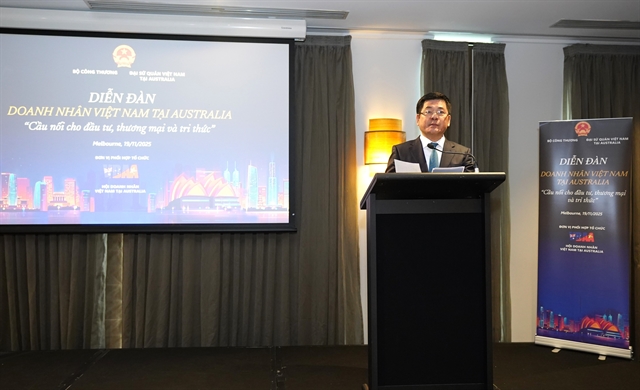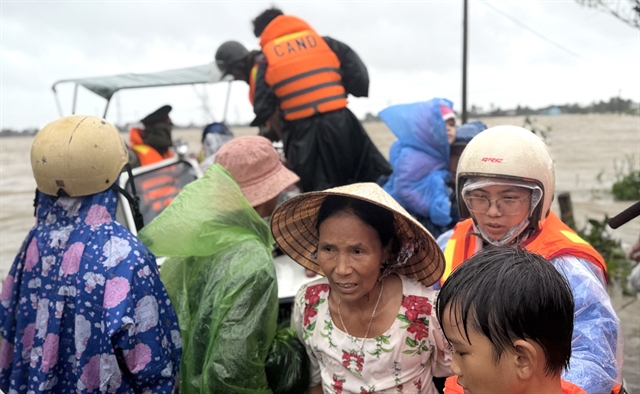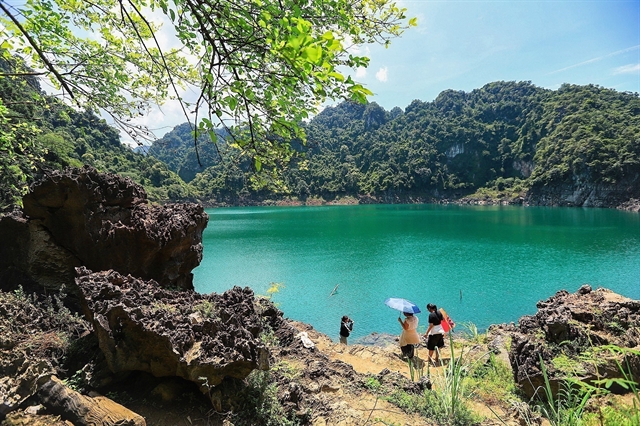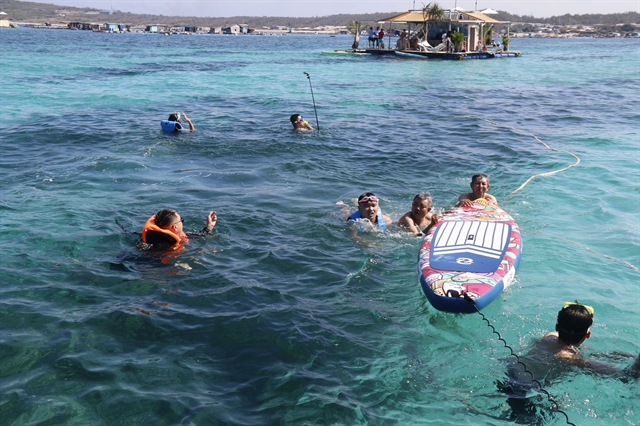 Environment
Environment

It's hard to believe that the special sightseeing area was fashioned out of an old rubbish dump.
By Lê Hương
People have to stand patiently in a long queue to enter Hanuel Park on Nanjido Island on a branch of the Han River in Seoul, South Korea.
None of them, neither adults nor children, seem frustrated to be queuing.
That's probably because they know once they pass the entrance gate, they will step into a relaxing space with immense fields of flowers, wild grass, full of fresh air and tranquillity.
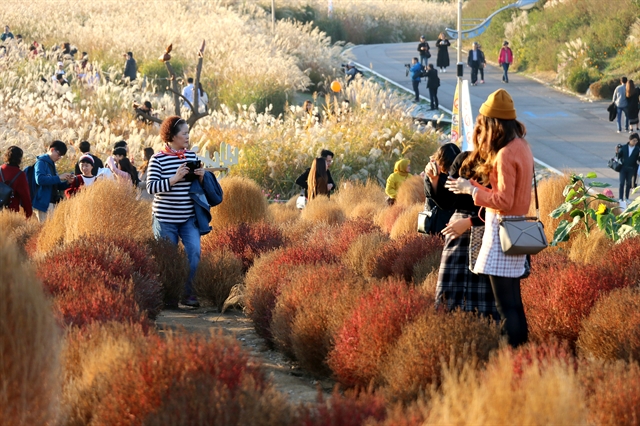
|
| People visit Hanuel Park especially in mass number at weekend. VNS Photos Đoàn Tùng |
It's a familiar scene at the park, which receives thousands of visitors a day.
It's hard to believe that the special sightseeing area was fashioned out of an old rubbish dump.
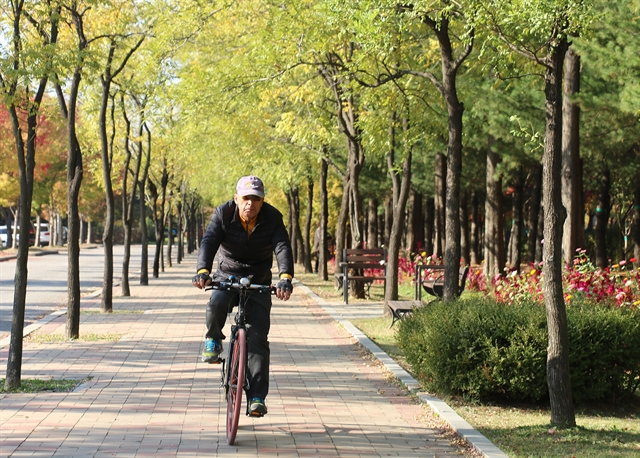
|
| The park offers both fresh atmosphere and tranquility. |
The island had been a landfill site for 10 million Seoul residents for 15 years from 1978.
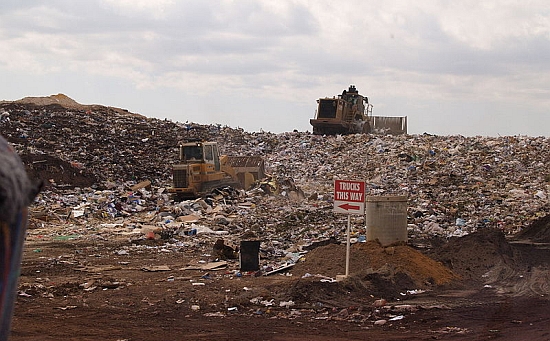
|
| Rubbish on Nanjido Island. Photo ecofriend.com |
It had become the world’s top trash mountain, reaching 98m high and covering more than 2.7 million square metres of land, or 34 times larger than the Great Pyramid of Giza in Egypt.
According to the Seoul administration’s website, the island became a barren land where methane gas and leachate flowed.
Locals living nearby faced the risk of various health problems due to being exposed to hazardous toxins and gas.
By 1993, the municipal government stopped dumping rubbish on Nanjido and began preparing to restore it.
A stabilisation project has since 1996 restored the site and turned it into a World Cup Park, where plants and animals were able to live in by 2002.

|
| People of all ages can lose themselves in the relaxing scenery. |
Also according to the Seoul website, the World Cup Park consists of four parks: Peace Park, where nature and people meet in peace; Noeul Park, where the sunset of Seoul is most beautiful; Nanjicheon Park, where willows bloom; and Haneul Park, the highest point where people can see the scenery of Seoul and the Hang River.
A natural ecosystem was finally established through releasing 30,000 butterflies across the park.
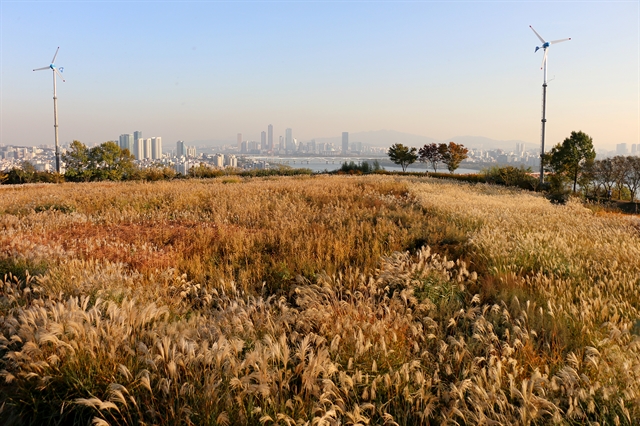
|
| Eulalia field at the park, dotted with wind turbines . |
“The park was built to serve the World Cup,” Lee Kook Hwan, general director of Mapo-Gu District’s Tourism & Employment Bureau, told Việt Nam News. “Since then, the park has been a popular relaxing place for locals and tourists. Every day in this season, we receive some 18,000 people.”
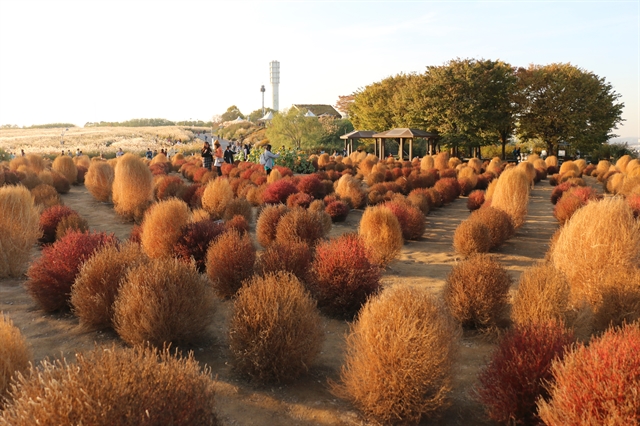
|
| The site hosts various events all year round to lure both locals and tourists. |
The park features eulalia and cogon grass in the northern part and buckwheat in the south.
Five wind turbines in the middle of the silver grass field produce power for the park and its maintenance office.
“This is the first time I have come here with my friends to conduct a scientific experiment,” said Park Ha Kyeong, a grade 11 student. “I feel the park is really nice, refreshing. The view is very beautiful.”
In autumn every year, Seoul holds the Silver Grass Festival at the top of Haneul Park to lure people to the breathtaking scenery.
Many photographers and models have chosen the site for photo sessions while Seoul’s kids consider the site as an ideal place to hang out. VNS

